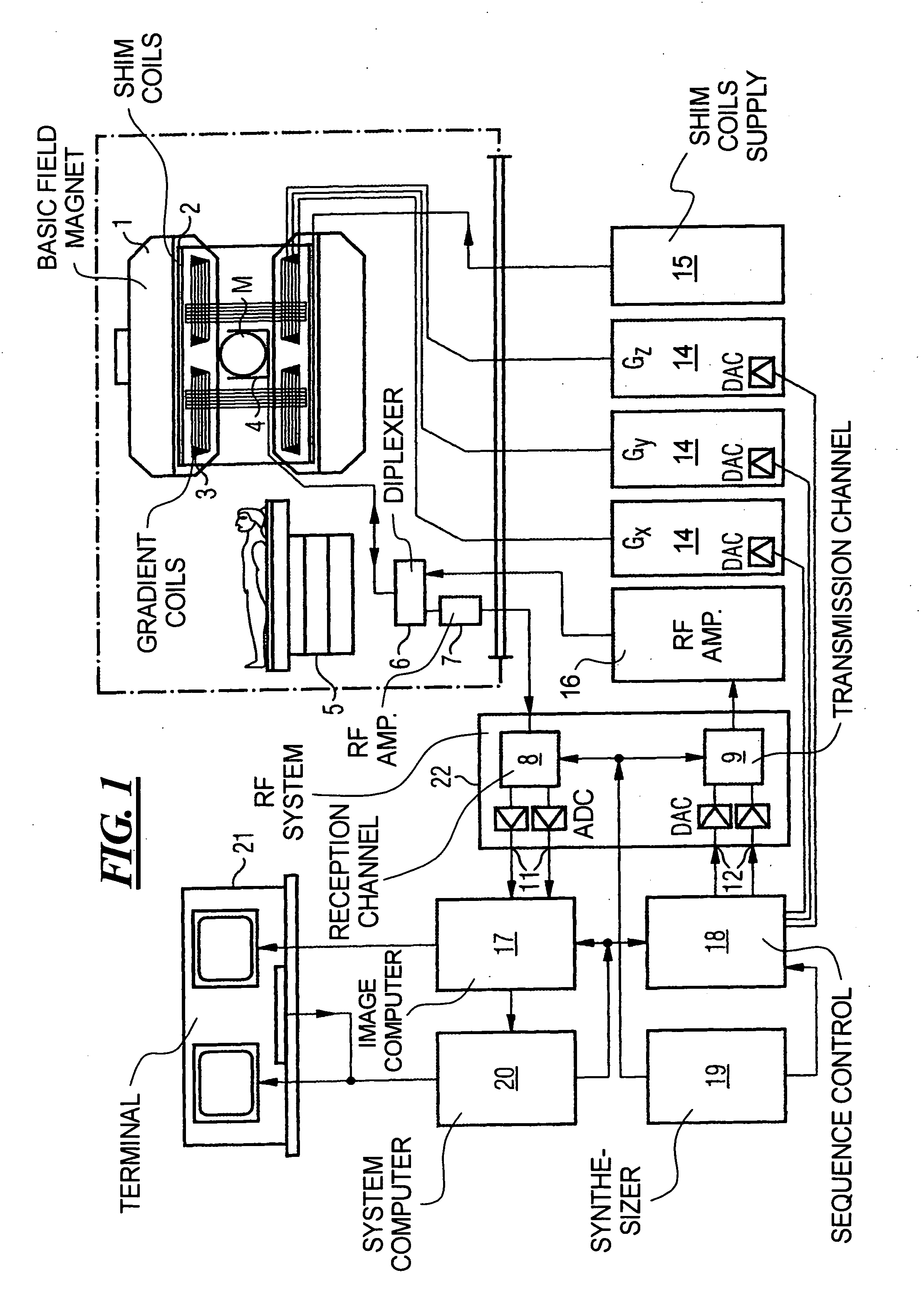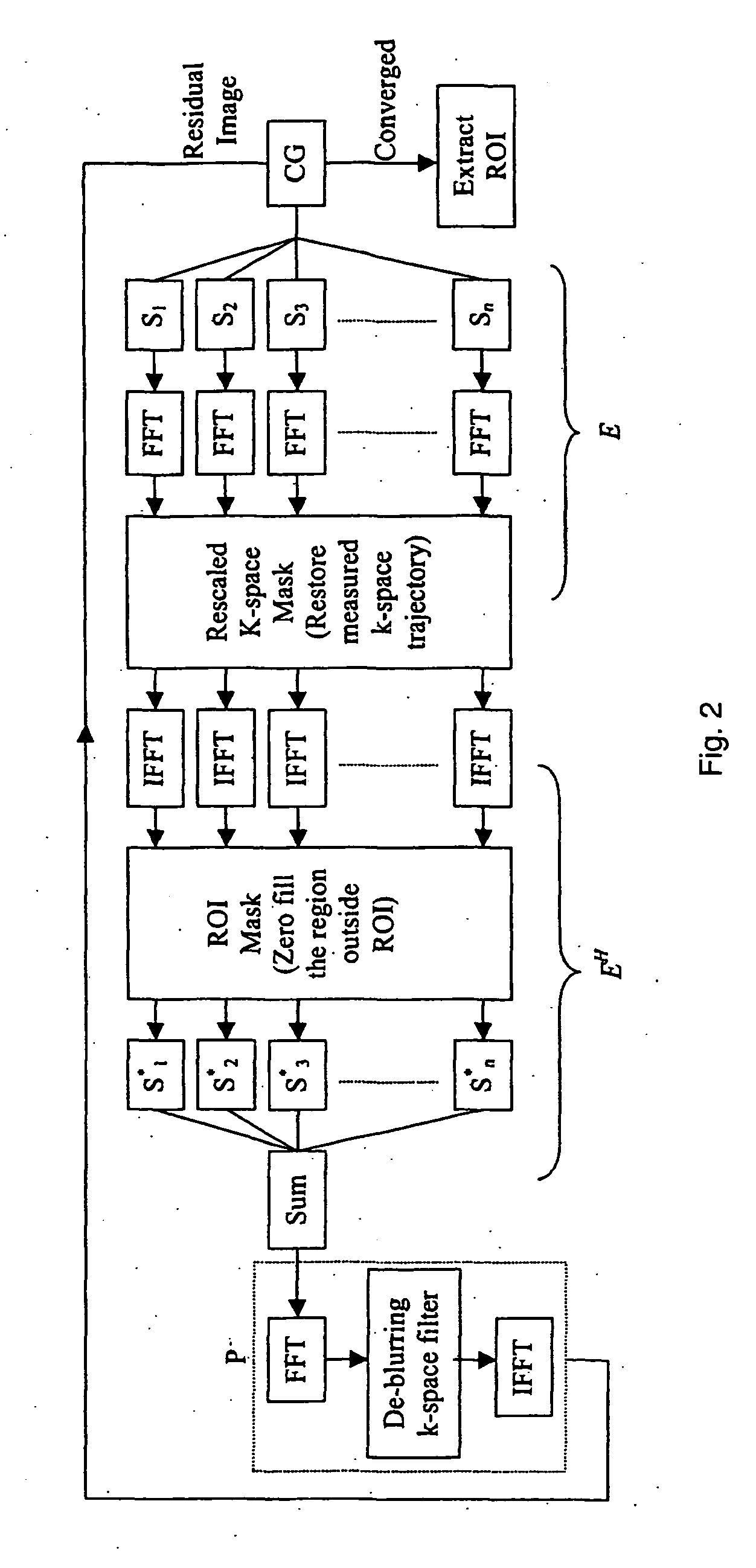Fast self-calibrating radial sensitivity encoded image reconstruction using rescaling and preconditioning
a radial sensitivity encoded, image reconstruction technology, applied in the field of reconstructing an image from acquired magnetic resonance data, can solve the problems of erroneous estimation of coil sensitivity, prone to calibration errors, and placing limits on achievable spatial and/or temporal resolution, so as to improve the convergence rate of cgls iteration, and eliminate the computational complexity of gridding and density compensation
- Summary
- Abstract
- Description
- Claims
- Application Information
AI Technical Summary
Benefits of technology
Problems solved by technology
Method used
Image
Examples
Embodiment Construction
[0021]FIG. 1 is a schematic illustration of a magnetic resonance tomography apparatus operable according to the present invention. The structure of the magnetic resonance tomography apparatus corresponds to the structure of a conventional tomography apparatus, with the differences described below. A basic field magnet 1 generates a temporally constant, strong magnetic field for the polarization or alignment of the nuclear spins in the examination region of a subject such as, for example, a part of a human body to be examined. The high homogeneity of the basic magnetic field required for the magnetic resonance measurement is defined in a spherical measurement volume M into which the parts of the human body to be examined are introduced. For satisfying the homogeneity requirements and, in particular, for eliminating time-invariable influences, shim plates of ferromagnetic material are attached at suitable locations. Time-variable influences are eliminated by shim coils 2 that are driv...
PUM
 Login to View More
Login to View More Abstract
Description
Claims
Application Information
 Login to View More
Login to View More - R&D
- Intellectual Property
- Life Sciences
- Materials
- Tech Scout
- Unparalleled Data Quality
- Higher Quality Content
- 60% Fewer Hallucinations
Browse by: Latest US Patents, China's latest patents, Technical Efficacy Thesaurus, Application Domain, Technology Topic, Popular Technical Reports.
© 2025 PatSnap. All rights reserved.Legal|Privacy policy|Modern Slavery Act Transparency Statement|Sitemap|About US| Contact US: help@patsnap.com



